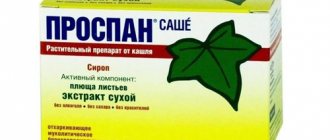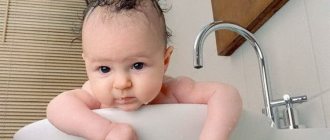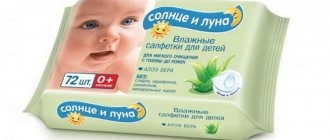When the first newborn girl appears in a family, inexperienced parents have many questions. Sometimes a mother comes home from the maternity hospital with her baby, but without the necessary knowledge. Very often you have to collect information on your own, asking something from pediatricians, learning something from grandmothers and friends. All parents want to raise a healthy and happy girl. And for this you need to give her your love and care. And, of course, every mother caring for her child should know the basics of hygiene. After all, not only the daughter’s well-being, but also the health of the future generation of the family depends on this. Let's figure out how to wash the baby and take care of the genitals correctly?
- 2 How to properly wash a girl: wisdom and remedies
2.1 How to wash a baby in the first year - video
- 3.1 Synechia (fusion of the labia) - Dr. Komarovsky - video
A little anatomy
The labia minora is a structural element of the vulva, consisting of two small folds of the mucous membrane.
In front and on the sides they are covered by the labia majora, and in the back they are limited by the hymen. Normally, when the labia minora are separated, the opening of the urethra (above, just below the clitoris) and the hymen with a small opening are visible. If, when you try to separate the labia minora in the position of the child on the back, only a small point is visible from which urine is released in drops, and a clear vertical scar (“suture”), you should visit a gynecologist.
Parents can take the girl to a specialist at any age, as many times as they want, as soon as they have doubts about the baby’s health. This is exactly the case when it is better to play it safe.
At the doctor
When visiting a gynecology office for children and adolescents, the doctor will definitely examine the girl and assess whether her physical and sexual development meets age standards. You should not escalate the situation and tell a preschool-age girl in advance all the details of an appointment with a pediatric gynecologist. It is enough just to set her up to the fact that she must correctly say her name and age, be able to show her tongue, chest, armpits, stomach and back.
The pediatric gynecologist, in a friendly manner, will ask the girl to lie on her back or, bending forward, stand in a knee-elbow position (on a couch, on a chair or on the mother’s lap, depending on the individual reaction to the examination). With the child positioned on his back, asking him to take a frog position, the doctor will carefully spread his legs and examine the external genitalia. If during the examination any pathology is revealed (redness of the skin around the external genitalia, vaginal mucosa, discharge, abnormal structure, tumor-like or other formations of the genitourinary system), then the gynecologist suggests that the mother perform a special examination of her daughter using devices adapted for childhood: gynecological instruments that do not cause discomfort in the child and do not violate the anatomy of the girl’s structure.
The pediatric gynecologist performs the examination wearing disposable rubber gloves, which is necessary for the mutual safety of the doctor and the patient.
Predisposing factors and causes of fusion
It is not without reason that synechia of the labia minora occurs in girls under 8 years of age. Due to the immaturity of the hormonal system, the mucous membrane of the vulva is insufficiently moisturized, thinned, and easily injured. Hypoestrogenism is the background on which other factors are layered that provoke fusion of the labia.
Parents should understand that, given the background, any condition that leads to excessive dryness or moisture in the external genital area can cause this problem.
The main causes of synechiae:
- lack of personal hygiene . The girl’s genitals require increased attention because they are not able to fully resist pathogenic microbes, they are easily injured, and the cells renew themselves worse and more slowly. Discharge between the labia should be regularly removed with running water;
- excessive washing with detergents . With excessive hygiene using soap and gels, the beneficial flora is washed out, the mucous membrane becomes dry, and microcracks appear. The injured surfaces of the labia minora stick together and synechiae form;
- diapers _ Diapers do not lead to the appearance of synechiae when used correctly. Adhesion occurs during rare shifts, when microbes multiply excessively at high humidity, and mechanical irritation from feces plays a role;
- vulvitis and vulvovaginitis. Inflammation of the vulvar mucosa, caused by specific and nonspecific flora, is one of the main causes of the development of synechiae. More often in girls, this pathology is caused by nonspecific flora (Escherichia coli, staphylo- and streptococci, Proteus, etc.), which she receives from the environment through household means, through hygiene items, toys. The specific flora that causes well-known STIs (gonococcus, chlamydia, myco-ureaplasma) is rare in babies and enters the body through the villi of the placenta or during passage through the mother’s birth canal.
These pathogens cannot be obtained by swimming in open water or swimming pools. It is a myth! During inflammation, discharge of various types is formed, microcracks appear, and sometimes wounds and ulcers appear. All this leads to gluing of the labia, the formation of adhesions between them;
- allergy. As with vulvitis, damage to the epithelium (skin and mucous membranes) during allergic reactions leads to a violation of its integrity;
- urinary system infections. Since the external opening of the urethra is in close proximity to the labia minora, in the presence of cystitis (inflammation of the bladder), pyelonephritis (purulent inflammation of the kidneys), bacteria excreted in the urine settle on the mucous membrane and cause vulvitis;
- cosmetical tools . It is necessary to carefully study the composition of products used in the genital area. Preference should be given to pH-neutral, colorless liquid soaps without fragrances. In addition to drying out the mucous membrane, they can cause an allergic reaction. Special mention should be made about diaper creams and baby creams. You should avoid applying them to the vulva area. When buying cream, give preference to those that do not contain zinc, because zinc has been proven to lead to the formation of synechiae;
- wet wipes . It is permissible to use them for hygiene of the external genitalia only in conditions where there is no access to water (travel, walk). In medicine there is such a thing as “rubbing vulvovaginitis”, i.e. when using a napkin, the mother can not only cleanse the mucous membrane of plaque, but also injure it, opening the “gate” for bacteria;
- long stay in water. It would seem that what could be better than water procedures?
But! Prolonged contact with water leads to degreasing of the upper layers of the epithelium, the cells become less protected and are easily injured. This is especially true in the summer. Recommendations: if a child really loves water, after water procedures, be sure to moisturize the mucous membranes with any oil or fatty cream;
- acute inflammatory processes in the body , especially accompanied by high fever. Against the background of a high general temperature, a local increase occurs in the genital area, and diaper rash appears. And if you take antibiotics, the condition is aggravated by an imbalance of microflora.
Features of the structure and physiology of the external genitalia in a newborn
In general, the structure and physiology of the external genitalia in girls corresponds to the structure of the organs in women. On the outside are the labia majora, followed by the labia minora, which cover the entrance to the vestibule of the vagina. But for a baby girl there are some differences:
- close location of the vaginal opening to the anus;
- the external genitalia are covered from the inside with a delicate, well-developed mucous membrane;
- there is a posterior commissure of the labia minora;
- there are a lot of glands on the labia;
- the vaginal contents are acidic;
- up to a year, the condition of the vagina is influenced by placental estrogens, the epithelium contains glycogen;
- after a year, the protective functions of the vagina disappear, and the epithelial cover becomes thinner.
Mom needs to remember that the mucous membrane of the external genitalia and the environment of the baby’s vagina are capable of independently preventing the occurrence of infection, and when leaving it is important not to affect this natural protection.
Sometimes a newborn girl may notice discharge from the external genitalia. They can be transparent, yellowish, gray-white, and sometimes reddish. Parents should not worry about this. This is how the sexual crisis of newborns manifests itself. It may also be accompanied by engorgement of the mammary glands and acne. A crisis occurs within a period of up to two months as a result of the child’s body being freed from the abundance of maternal estrogens. Bloody discharge lasts 1–2 days, after which it disappears on its own; no treatment is required. A sticky gray-white or light beige coating (vernix) between the labia and in the vagina is also normal. If there is only a small amount of such grease, then there is no need to specifically remove it. In case of discharge and plaque, the baby only needs regular washing under running water.
A girl’s health largely depends on proper care
If the discharge continues for more than three days, has an unpleasant odor, is purulent, very abundant, and/or inflammation of the child’s external genitalia is observed, you should immediately consult a doctor.
It is imperative to wash the girl after stool, since contact with mucous membranes can cause inflammation. During hygiene procedures, it is highly undesirable to frequently use various care products, be it soap, wet wipes or powders. They can affect the vaginal environment, reducing its barrier function. And the substances contained in them contribute to dry skin and mucous membranes. You can use cleaning products no more than once a day, and they must be appropriate for the child’s age. Due to the fact that the mucous membrane of the girl’s external genitalia is very delicate, it is not recommended to use washcloths, sponges, napkins, or rough towels when washing and drying this area.
Signs and manifestations
Very often synechiae are an accidental finding. They can be detected by parents during hygiene procedures or by a doctor during a medical examination.
Also, fusion of the labia minora in girls can be detected during a diagnostic search. This is a situation when there are manifestations of the disease, but the true cause cannot be immediately determined. Most often, a girl goes to a pediatric gynecologist on the referral of other specialists or a pediatrician when bad urine tests are detected, and there is no effect from the treatment of cystitis and pyelonephritis.
Indirect manifestations that may lead parents to think that a girl may have synechiae of the labia:
- restless behavior when urinating;
- unpleasant odor of the genitals;
- unpleasant odor of urine;
- child’s refusal to sit on the potty;
- if the baby often puts her hands in her panties;
- child's complaints of pain in the vulva.
Externally, synechiae is a complete or partial fusion (sticking together) of the labia minora. The condition is not life-threatening, but in the absence of adequate care it can lead to the development of certain complications.
The fused labia form a pocket in which residual urine and desquamated epithelium are retained, which is a good breeding ground for the development of vulvitis. If the fusion is complete, the outflow of urine becomes difficult, leading to its reflux into the vagina and the subsequent development of vaginitis.
It is also possible for bacteria to spread upward from the “pocket” to the urethra and bladder, with the subsequent development of inflammation of the urinary tract. Medical sources contain information about long-term complications of untreated synechiae.
They are rare, but they do occur - the formation of a hard scar in the fusion area, impaired outflow of menstrual fluid, difficulty during sexual intercourse, deformation of the perineal area, which entails difficulties during pregnancy and childbirth.
Diagnostics
To make a diagnosis, the doctor only needs to examine the little patient. During the examination, the degree of fusion, the presence of a concomitant inflammatory process is assessed, and further examination and treatment tactics are outlined.
Despite the clarity of the diagnosis, the gynecologist may prescribe a number of additional examinations - a general urine test (necessary to exclude concomitant inflammation of the urinary system), a general smear (to exclude the diagnosis of vulvitis), culture for flora and sensitivity to antibiotics (if an inflammatory process is suspected).
In addition, parents will answer a number of questions regarding the daily routine, nutrition, child care, illnesses suffered by the child, etc. Accurate answers will help the doctor correctly determine the cause of the development of synechiae and select adequate treatment.
Treatment approaches
Conservative treatment
No matter how synechiae looks, it is recommended to start with conservative treatment, which includes several stages.
First, the cause is eliminated:
- in the presence of inflammation of the urinary system, antibacterial drugs and uroseptics are prescribed orally;
- for vulvitis and vulvovaginitis - local treatment with antibacterial, antiviral, antifungal drugs (depending on the pathogen);
- in case of a general inflammatory process (rhinitis, bronchitis, pneumonia, etc.), the underlying disease is treated together with a pediatrician;
- for allergies, antihistamines and a strict diet are prescribed;
- If hygiene rules are violated, recommendations are given to correct errors.
Secondly , sitz baths with herbal decoctions that help soften the adhesions. The duration of the bath is no more than five minutes.
Thirdly , applying hormonal drugs (ovestin, folliculin) or drugs used to resolve scars (contractubex) to the site of fusion. The treatment regimen is selected individually depending on the severity of the fusion.
The duration of use of hormonal drugs is two weeks. If necessary, the course of treatment can be repeated after a break.
Surgery
Surgical methods are resorted to if conservative treatment does not give the expected result. As a rule, a gynecologist using sterile instruments (Volkmann spoon, cytobrush, Eyre spatula) separates the fused labia in a antenatal clinic under local anesthesia, after which a synthomycin emulsion is applied to the vulva.
At home, to speed up healing, it is recommended to perform sitz baths with herbs and lubricate the vulva with 5 - 10% synthomycin emulsion or levomekol 2 times a day for 5 days.
It is extremely rare, in the case of “old” synechia, to resort to a scalpel. This procedure is performed in a hospital setting under general anesthesia.
How to properly wash a girl: wisdom and remedies
Already in the maternity hospital, the medical worker must teach the mother all the intricacies of care. After arriving home, the rules remain the same.
You need to wash the girl under running water
They wash a newborn girl under running water when changing a diaper. It is not recommended to use baby care products. The sequence of actions when washing is as follows:
- Wash your own hands thoroughly.
- Turn on the tap water. Its temperature should match the temperature of the skin. You can check this with your own forearm or elbow, placing it under the stream. The mother (or another caring adult) should not feel either heat or cold.
- Take the baby so that her head lies on the elbow cavity, her back on the forearm. Use the hand on which the child is lying to clasp one leg. The second hand is free.
- Place the child's perineum under running water.
- With the second hand, strictly in the direction from front to back, first rinse only the girl’s labia, then the inguinal folds, removing all contaminants.
- Next, rinse the anal area and between the buttocks.
- Clean the skin around the perineum.
- Finally, gently pat your skin lightly with a clean, dry towel.
- If possible, leave the child to “ventilate” for 10–15 minutes.
Before bathing the baby, she must also be washed under running water. When washing, do not be overzealous and do not touch the mucous membranes. It is necessary to change the diaper and wash off dirt after each bowel movement of the baby.
Nothing special: ordinary clean (if in doubt, boiled) water, at room temperature, washed by hand, without any cotton wool or rags. The direction of movement is very important - from the pubis to the butt. There is no need to add any antiseptics (furacilin, potassium permanganate), baby soap (soapy water) - yes, but not often (1-2 times a week, and wash well). The main thing: prevention of problems - supporting the normal functioning of the mucous membranes, i.e. avoid overheating.
Komarovsky E. O.
https://www.komarovskiy.net/faq/gigiena-devochek.html
Without a doctor's prescription, no medications or antibacterial agents should be used for washing and treating the external genitalia, as they disrupt the natural microflora of the child.
After air baths, you can put a diaper or absorbent panties on your baby. Modern diapers meet all safety requirements and do not negatively affect the child’s health (including the genital area) if properly cared for.
How to wash your baby in the first year - video
Prevention
To prevent the formation of synechiae in a girl, parents are advised to monitor the baby’s personal hygiene (limit soap, use of wet wipes), limit allergenic products , and promptly treat general acute inflammatory processes, as well as inflammation of the urinary tract and external genitalia.
To prevent recurrence of the disease in those who have already completed a course of treatment, in addition to all general preventive measures, it is also recommended to regularly treat the labia minora with vegetable oils (sea buckthorn, olive, peach) or any fatty cream, especially during exacerbation of allergies and during infectious processes, accompanied by an increase in temperature.
What you need to know about a girl's toilet
— During the day, it is enough to wash the girl with warm running water from front to back so that the bacteria inhabiting the intestines do not enter the vagina. An adult's hands must be washed. You can also use a gauze pad or cotton swab for this procedure.
— After washing, moisture is not wiped off, but blotted. The towel should be clean, soft and individual.
— Children's underwear and panties must be changed daily.
— When wearing diapers, it is recommended to use baby diaper cream or a special protective cream.
Not recommended:
— most pediatric gynecologists strongly DO NOT recommend washing the external genitalia with soap. This disrupts the natural microflora of the vagina, creating conditions for the establishment and reproduction of pathogenic flora. In addition, the proximity of the anus to the vagina increases the possibility of infection. In addition, the sebaceous and sweat glands of a small child do not yet work. Frequent use of soap dries out the mucous membrane and leads to the destruction of the protective water-fat layer. All kinds of fragrances and fragrances (even natural ones), which may be part of soap or foam, can cause itching and redness of the vulvar mucosa. Therefore, for the purpose of intimate hygiene, soap should be used as rarely as possible and only wash the skin around the vagina;
— there is no need to add herbs to the water due to the risk of developing an allergic reaction;
— sponges and washcloths are not needed to care for the genitals; they can cause microscopic scratches, because The baby's skin is very delicate and sensitive.









